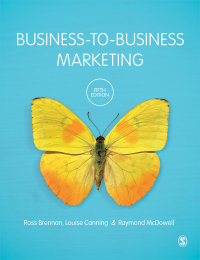The global firm Bayer has been in operation for over 150 years, with the growth of its
Question:
The global firm Bayer has been in operation for over 150 years, with the growth of its business in that time driven by the development of ‘new molecules for use in innovative products and solutions to improve the health of humans, animals and plants’ (Bayer, 2016). Historically, the company’s operations were built around healthcare, agriculture and high-tech polymer activities, these latter functioning for some years as a cash machine for the Bayer group. Its expertise in high-tech polymer activities enabled Bayer’s material sciences division to offer products and material solutions to sectors as diverse as automotive, construction, electronics, medical, cosmetics and textiles. Sometimes the division’s materials are visible, but, more often than not, they work ‘behind the scenes’, whether as insulation for houses or the refrigerators inside them, in mattresses, automobile headlights and stadium roofs, as protective coatings or extremely thin films.
While the material sciences division had been an important part of the group’s activities, by 2014 Bayer had decided to realign its interests in order to concentrate on its core life science business. This was perhaps to be expected, given that by 2013, the life sciences represented 71 per cent of company revenue and 88 per cent of adjusted earnings. Added to this was the fact that Bayer could not fund expansion for both divisions and its fast-growing position in healthcare would require considerable capital as well as research and development investment to maintain that position. Announcing its move away from materials in 2013, Bayer’s intention was to create a legally and financially independent materials science unit which could be floated on the stock market. Such a move would require the support of financial markets, customers and employees so that the new entity represented a credible business proposition as an investment, a solutions provider and an employer.
As one of the biggest corporate launches in 2015, the task of creating the corporate identity to support that credible business proposition fell to the agency Landnor (www.
landnor.com), part of the global communications agency, WPP. According to Kirsten Foster, executive director of strategy at Landnor, while communication with clients and investors was important, most critical were employees. In a B2B space, employees are particularly involved in the delivery of the brand promise, which means that it is important that they remain engaged – the brand has to speak as much internally as externally. Internal engagement in Bayer’s materials science division was challenging as employees had a particularly strong relationship with their employer. Working for Bayer was like a badge of honour so that when the materials division was separated from Bayer, members of staff lost the Bayer brand name and the associations with it, such as the name, its reputation and brand values of leadership, integrity, flexibility and efficiency.
QUESTIONS With reference to the case study and Covestro’s website (www.covestro.com):
1. What do you consider to be Covestro’s core competencies?
2. Based on the information contained in the website, how do you think the company positions itself within the material sciences industry?
3. Assess the coherence of the new corporate identity chosen for Bayer’s independent spin-off material sciences division, based on the online presentation of this new business.
4. In what way are the traits courageous, curious and colourful signalled via Covestro’s brand identity?
Step by Step Answer:

Business To Business Marketing
ISBN: 9781526494399,9781529726176
5th Edition
Authors: Ross Brennan , Louise Canning , Raymond McDowell





